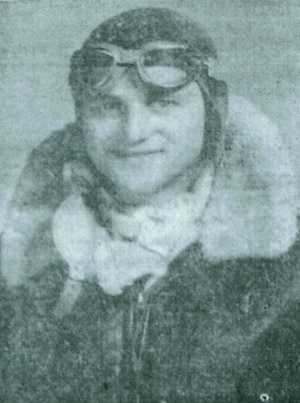

Remember...
Melvin Grey Livesay
1921-1944
"Freedom lies in being bold."
Robert Frost
 |
Remember...Melvin Grey Livesay
|
Melvin Livesay graduated from Lewisburg High School and was a member of the Lewisburg Methodist Church. In July of 1942, Livesay enlisted in the Navy's aviation wing, and he received his commission as ensign on October 1, 1943. On December 18, 1943, Melvin Livesay married Helen Louise Bland, born on January 26, 1924, in Mullins, West Virginia, in Wyoming County. Helen's place of residence at the time of their marriage, however, was Alderson, West Virginia, in Greenbrier County, were the couple was married. Melvin was 22 and Helen was 19 years of age on the day of their marriage. Helen accompanied Melvin to the West Coast following the marriage. Melvin Livesay shortly afterwards went overseas for active duty, and Helen later returned to her home in Alderson. (Sources: "Memorial Services to be Held Sunday," Beckley Post-Herald, 9 Dec. 1944: 1; "Lewisburg Flier Killed in Southwest Pacific," White Sulphur Sentinel, 1 Dec. 1944: 1; "Ens. Melvin G. Livesay Dead," Greenbrier Independent, n.d.)
Melvin was designated as a naval aviator as he completed a prescribed flight training course at the Naval Air Center in Pensacola, Florida, for intermediate flight training. Shortly afterward, Melvin was sent to fight in the Pacific. Melvin Livesay eventually called his home from overseas (August 1944) and talked to each member of his family, including his wife, Helen. Additionally, Livesay and a fellow group of aviators were later pictured in an issue of Life magazine (September 3, 1944). Livesay was expecting to return home on Christmas in 1944. (Source: "Ens. Melvin G. Livesay Dead," Greenbrier Independent, n.d.)
On October 25, 1944, the Battle of Cape Engano broke out as Japan and the United States fought in the Philippines. The battle was crucial in decreasing the size of Japan's empire in the Pacific. Ensign Melvin Livesay was remembered by the decorated United States Secretary of the Navy James Forrestal as being courageous in his efforts during the battle of Cape Engano as a dive bomber pilot in Air Group 15 attached to the USS Essex. Forrestal recalled that Ensign Livesay faced adverse weather conditions in order to carry out his task as he skillfully maneuvered around the deadly conditions to eventually score a direct hit on a hostile carrier. Ensign Livesay, according to Forrestal, showed resolute initiative to defeat the enemy by showing excellent airmanship in terrific odds. The battle ultimately resulted in a victory for Admiral William Halsey's American forces over Admiral Jisaburo Ozawa's Japanese forces. The battle weakened Japanese military power, and landholdings were taken away from the Japanese as well. Ensign Livesay garnered a tremendous deal of acknowledgment for his efforts on October 25, 1944. (Sources: Rickard, J., 3 May 2012, "Battle of Cape Engano, 25 October, 1944," accessed 30 Mar. 2014, http://www.historyofwar.org/articles/battles_cape_engano.html; "Ensign Livesay Awarded Cross Posthumously," White Sulphur Sentinel 26 Oct. 1944.)
Article prepared by Gene Bailey and Collin Castillo.

West Virginia Archives and History welcomes any additional information that can be provided about these veterans, including photographs, family names, letters and other relevant personal history.